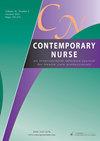“Teaching in Circle” with student nurses contributes to experiential understanding of Cultural Safety
IF 2.1
4区 医学
Q3 NURSING
引用次数: 2
Abstract
Background: Cultural safety is mandated for Australian nursing practice and education. Cultural safety privileges the knowledge of the client, who determines whether healthcare is culturally safe. Understanding and learning cultural safety requires critical self-reflection to expose clinicians’ assumptions, unconscious biases, beliefs and actions, and their impact on clients. More research is required on best-practice strategies on how students learn about cultural safety in nursing education. Experiential pedagogical methods may be one such strategy to promote understanding of principles that underpin safe environments. Objectives: To explore the influence of “Teaching in Circle” to enhance students’ understanding of cultural safety within the classroom environment. Methods: Students in first-year undergraduate Bachelor of nursing units participated. Teachers facilitated tutorials using a respectful adaptation of “Teaching in Circle” methodology; it was underpinned by the principles of Yarning, an Aboriginal and Torres Strait Islander Peoples way of learning and communicating in groups. Students developed principles to guide the facilitation of a more culturally safe classroom, providing written feedback on the environment and their participation in the circle. Results: Student feedback was reflected in three themes: “Journey through unfamiliar territory”; “More personable way of learning and sharing” and “Relational engagement creates safety”. Student perspectives resonated strongly with the principles of cultural safety or lack of within healthcare settings. The method disrupted normative classroom/learning environments and supported experiential learning about the principles of cultural safety. Conclusions: “Teaching in circle” provided an experiential means of enhancing first-year nursing students’ understanding of the principles of cultural safety. This learning should be embedded in the nursing curriculum and on-going education to prepare nurses to provide culturally safer care to Aboriginal and Torres Strait Islander Peoples. The study supports similar research calling for innovative learner-focused, experiential methods for the development of the practice of cultural safety in Australian nursing education. Impact statement: Exploratory research project, “Teaching in Circle” with student nurses contributes to experiential understanding of cultural safety principles.与实习护士的“循环教学”有助于对文化安全的体验性理解
背景:文化安全是澳大利亚护理实践和教育的强制性要求。文化安全特权是指客户的知识,是客户决定医疗保健在文化上是否安全。理解和学习文化安全需要批判性的自我反思,以暴露临床医生的假设、无意识的偏见、信念和行动,以及它们对客户的影响。关于学生如何在护理教育中学习文化安全的最佳实践策略,需要进行更多的研究。体验式教学方法可能是促进对安全环境基础原则的理解的一种策略。目的:探讨“循环式教学”对提高学生对课堂环境文化安全认识的影响。方法:护理专业本科一年级学生参与。教师们使用尊重的“循环教学”方法来促进教学;它以Yarning的原则为基础,Yarning是土著人和托雷斯海峡岛民集体学习和交流的方式。学生们制定了一些原则,以指导促进一个更文化安全的课堂,就环境和他们在圈子中的参与提供书面反馈。结果:学生反馈反映在三个主题上:“穿越陌生领域的旅程”;“更有个性的学习和分享方式”和“关系参与创造安全”。学生的观点与医疗环境中文化安全或缺乏的原则产生了强烈的共鸣。这种方法破坏了规范的课堂/学习环境,支持了关于文化安全原则的体验式学习。结论:“循环式教学”为提高大一护生对文化安全原则的理解提供了一种体验式的方法。这种学习应纳入护理课程和持续教育,使护士能够为土著和托雷斯海峡岛民提供文化上更安全的护理。该研究支持类似的研究,呼吁创新的以学习者为中心的经验方法,以发展澳大利亚护理教育中的文化安全实践。影响陈述:探索性研究项目“循环教学”与学生护士有助于体验文化安全原则的理解。
本文章由计算机程序翻译,如有差异,请以英文原文为准。
求助全文
约1分钟内获得全文
求助全文
来源期刊

Contemporary Nurse
医学-护理
CiteScore
2.00
自引率
6.20%
发文量
38
审稿时长
6-12 weeks
期刊介绍:
Contemporary Nurse is an international peer-reviewed journal designed to increase nursing skills, knowledge and communication, assist in professional development and to enhance educational standards by publishing stimulating, informative and useful articles on a range of issues influencing professional nursing research, teaching and practice.
Contemporary Nurse is a forum for nursing educators, researchers and professionals who require high-quality, peer-reviewed research on emerging research fronts, perspectives and protocols, community and family health, cross-cultural research, recruitment, retention, education, training and practitioner perspectives.
Contemporary Nurse publishes original research articles, reviews and discussion papers.
 求助内容:
求助内容: 应助结果提醒方式:
应助结果提醒方式:


